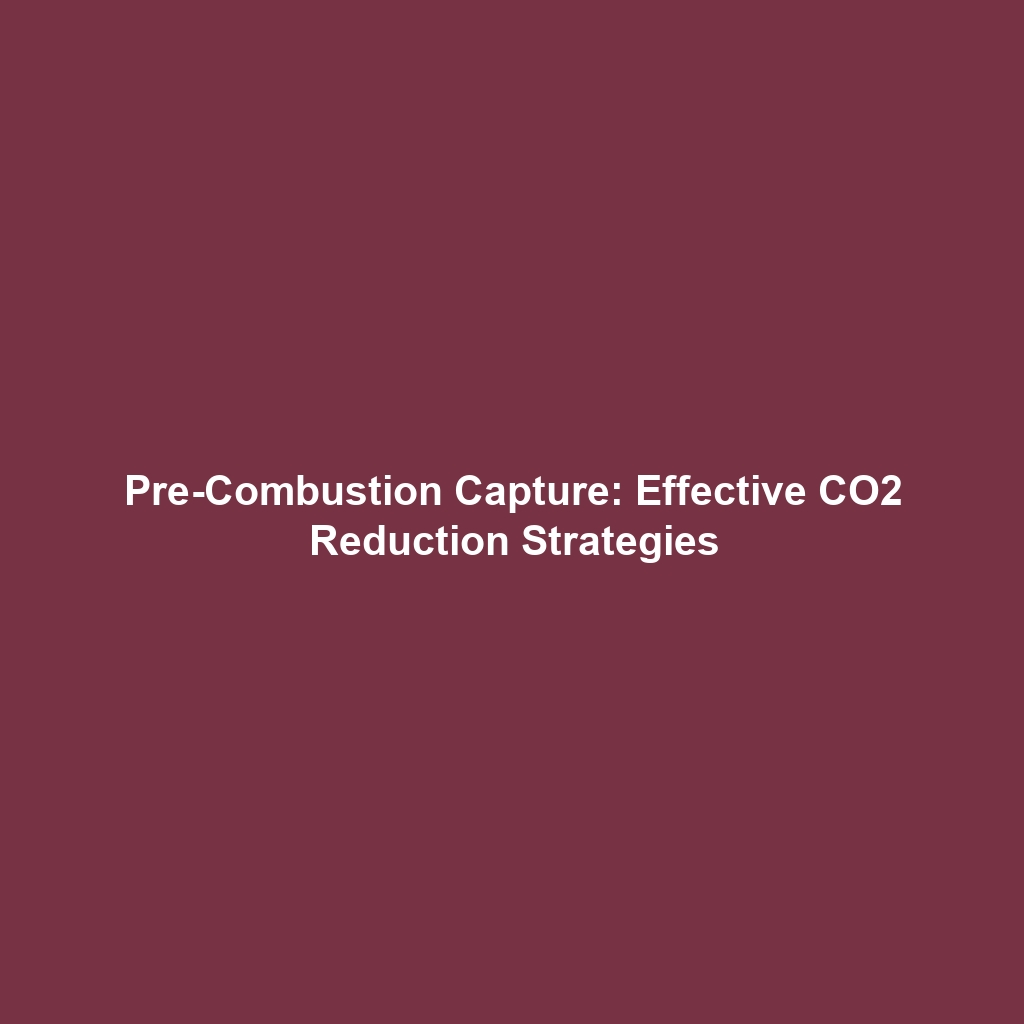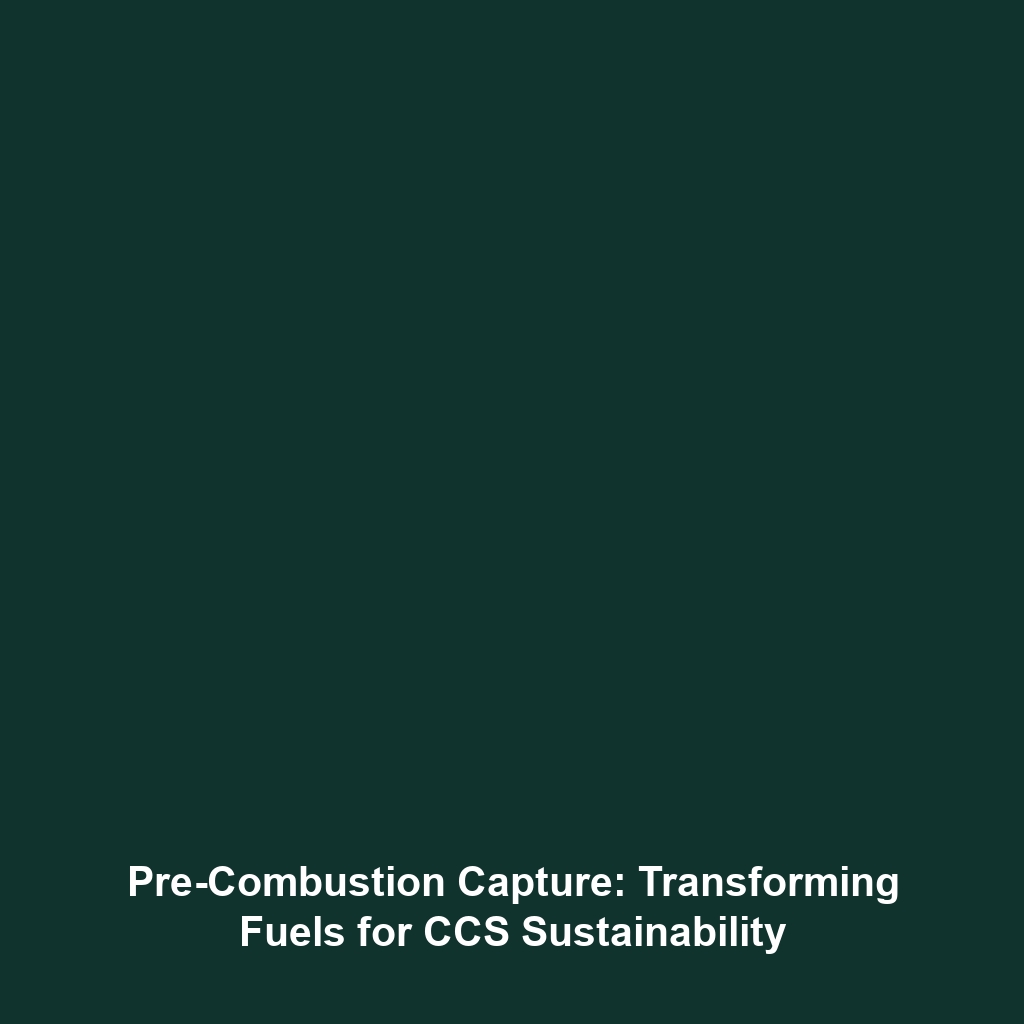Pre-Combustion Capture: Capturing CO2 Before Fuel is Burned
Pre-Combustion Capture (PCC) is a transformative approach in the realm of Carbon Capture & Storage (CCS), focusing on the sequestration of CO2 before the combustion process of fossil fuels occurs. This technology plays a vital role in mitigating climate change by reducing greenhouse gas emissions at their source. As global efforts intensify towards achieving sustainability, understanding the significance and functionality of Pre-Combustion Capture becomes essential for developing effective carbon management strategies.
Key Concepts of Pre-Combustion Capture
Pre-Combustion Capture involves the transformation of fossil fuels, typically natural gas or coal, into a gas mixture known as syngas, which consists primarily of hydrogen and carbon monoxide. This process offers several key principles that encapsulate its operation:
- Gasification: The initial step involves converting solid or liquid fuels into syngas through gasification methods.
- CO2 Separation: During further processing, CO2 is separated from hydrogen, allowing for the capture of more than 90% of CO2 emissions.
- Hydrogen Production: The hydrogen produced can be used as a clean energy source, serving as a bridge to a low-carbon economy.
These principles demonstrate how Pre-Combustion Capture integrates seamlessly into the broader framework of Carbon Capture & Storage (CCS), ultimately aiming to lower total carbon emissions.
Applications and Real-World Uses
The applications of Pre-Combustion Capture are varied and impactful, showcasing how the technology plays a critical role in industry:
- Electricity Generation: Many power plants utilize pre-combustion capture to generate cleaner electricity, significantly reducing their carbon footprint.
- Hydrogen Production Facilities: Facilities focused on hydrogen production are increasingly implementing PCC to create hydrogen from fossil fuels with diminished CO2 emissions.
- Natural Gas Processing: Pre-Combustion Capture is frequently used in natural gas processing to enhance the purity of gas while capturing emissions.
This illustrates how Pre-Combustion Capture is applied in Carbon Capture & Storage practices, emphasizing both environmental impact and resource efficiency.
Current Challenges
While Pre-Combustion Capture shows great promise, several challenges must be navigated for broader implementation:
- High Costs: The initial investment and operational costs can be prohibitive for many facilities.
- Technological Maturity: Some PCC technologies are still in developmental stages, requiring further research and refinement.
- Infrastructure Needs: There is a significant requirement for infrastructure to support CO2 transport and storage post-capture.
These challenges highlight the issues in Carbon Capture & Storage related to Pre-Combustion Capture, necessitating sustained research and development efforts.
Future Research and Innovations
Future research in Pre-Combustion Capture is crucial for advancing its efficacy and cost-effectiveness. Key areas of exploration include:
- Next-Gen Materials: Developing advanced materials for better CO2 absorption and separation.
- Process Optimization: Streamlining the syngas production process to improve efficiency.
- AI and Machine Learning: Utilizing AI for real-time monitoring and optimizing capture processes.
Such innovations are integral to enhancing the role of Pre-Combustion Capture within Carbon Capture & Storage, leading to more effective environmental solutions.
Conclusion
In summary, Pre-Combustion Capture is a vital technology within Carbon Capture & Storage (CCS) that offers promising avenues for reducing CO2 emissions before fuel combustion. Its applications across various sectors showcase its significance, while ongoing research aims to overcome current limitations. To learn more about the latest developments and technologies in CCS, visit our CCS Technology Page. As we progress, fostering innovation and collaboration is essential for a sustainable future.

